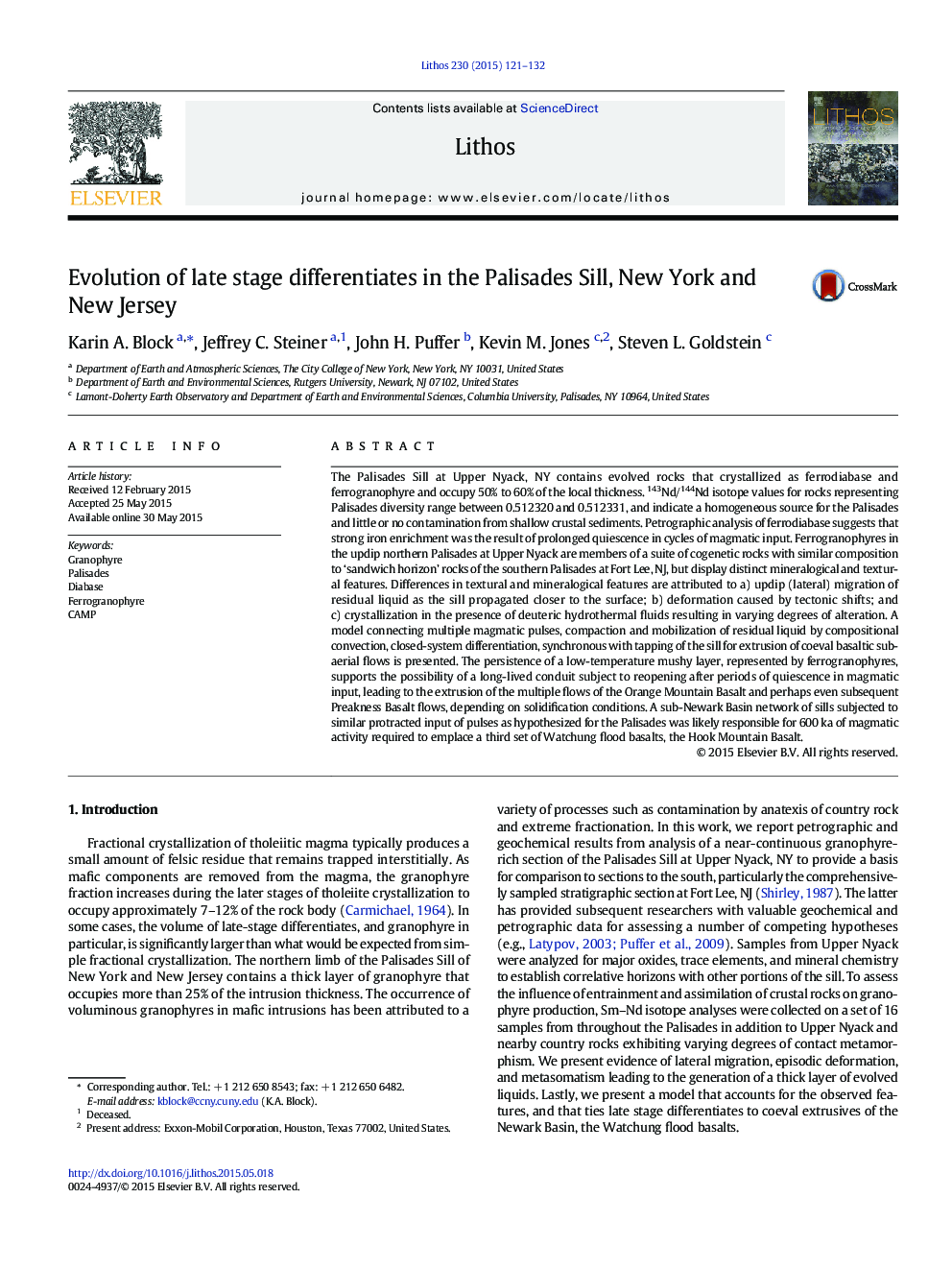| کد مقاله | کد نشریه | سال انتشار | مقاله انگلیسی | نسخه تمام متن |
|---|---|---|---|---|
| 4715675 | 1638661 | 2015 | 12 صفحه PDF | دانلود رایگان |

• Over 50% of the Palisades Sill at Upper Nyack, NY is composed of evolved rocks.
• Ferrogranophyre mineralogy varies along strike despite little variation in bulk composition.
• Deuteric transport and deformation mobilized residual liquids during cycles of magma input.
• Nd isotopes show that Palisades magma did not significantly entrain country rocks.
• A model connecting the Palisades with the Watchung subaerial flows is presented.
The Palisades Sill at Upper Nyack, NY contains evolved rocks that crystallized as ferrodiabase and ferrogranophyre and occupy 50% to 60% of the local thickness. 143Nd/144Nd isotope values for rocks representing Palisades diversity range between 0.512320 and 0.512331, and indicate a homogeneous source for the Palisades and little or no contamination from shallow crustal sediments. Petrographic analysis of ferrodiabase suggests that strong iron enrichment was the result of prolonged quiescence in cycles of magmatic input. Ferrogranophyres in the updip northern Palisades at Upper Nyack are members of a suite of cogenetic rocks with similar composition to ‘sandwich horizon’ rocks of the southern Palisades at Fort Lee, NJ, but display distinct mineralogical and textural features. Differences in textural and mineralogical features are attributed to a) updip (lateral) migration of residual liquid as the sill propagated closer to the surface; b) deformation caused by tectonic shifts; and c) crystallization in the presence of deuteric hydrothermal fluids resulting in varying degrees of alteration. A model connecting multiple magmatic pulses, compaction and mobilization of residual liquid by compositional convection, closed-system differentiation, synchronous with tapping of the sill for extrusion of coeval basaltic subaerial flows is presented. The persistence of a low-temperature mushy layer, represented by ferrogranophyres, supports the possibility of a long-lived conduit subject to reopening after periods of quiescence in magmatic input, leading to the extrusion of the multiple flows of the Orange Mountain Basalt and perhaps even subsequent Preakness Basalt flows, depending on solidification conditions. A sub-Newark Basin network of sills subjected to similar protracted input of pulses as hypothesized for the Palisades was likely responsible for 600 ka of magmatic activity required to emplace a third set of Watchung flood basalts, the Hook Mountain Basalt.
Figure optionsDownload as PowerPoint slide
Journal: Lithos - Volume 230, 1 August 2015, Pages 121–132